Richard of Conisbrough seems to have been a very controversial figure throughout his life, from questions of his paternity, through his secret marriage, to his untimely death for his involvement in a particularly ill-thought-out plot.
He and I were born within 3 miles (and, of course, 6 centuries) of each other. As a student, I even gave guided tours at the Castle in which he was born. And the man is a completely fascinating, and yet such a shadowy, figure. The grandfather of both Edward IV and Richard III, he seems to have been a mediocre diplomat and soldier, and his eventual treason barely registers in the history books.
Richard’s birth is obscured by time. Although sources seem undecided, the most likely date of his birth appears to be 1386 (although some place it as early as 1375). He was a grandson of Edward III through his father, Edmund of Langley, 1st Duke of York; and his mother, Isabella of Castile (sister of John of Gaunt’s wife, Constance), was described by chronicler Thomas of Walsingham as having ‘loose morals’. She and Edmund appear to have been an ill-matched pair from the beginning.
Edmund and Isabella married in 1372, two children soon followed; Edward of Norwich in c.1373 and Constance in c.1374. It seems the couple’s relationship cooled soon after, as no other children were forthcoming for over 10 years. As a result, the arrival of Richard of Conisbrough in 1386 appears to have raised some eyebrows and most people – even of the time – suspected that he was the son of Isabella’s lover, rather than the Duke of York.
Isabel’s relationship with John Holland, Duke of Exeter and half-brother of the king, Richard II, was probably an open secret. The fact that his father and brother, both, left him out of their wills has fuelled this theory. However, leaving a son out of your will was not entirely unusual – Edmund of Langley was, in fact, left out of his own father’s will (that of Edward III) – and, my research suggests that Richard of Conisbrough was already dead by the time his brother, Edward, made his will.
Isabella died on 23rd December 1392. Her will made Richard II her heir, but specifically asked him to provide an annual pension of 500 marks for her youngest son. Richard’s allowance was paid regularly until 1399, but following the deposition of Richard II and accession of Henry IV, payments were made only sporadically and Richard of Conisbrough became the Royal Family’s ‘poor relation’.
Richard of Conisbrough’s father, Edmund of Langley, died in 1402 and the dukedom of York passed to Richard’s older brother, Edward.
Although his regular pension petered out under Henry IV, Richard’s career was largely unremarkable. In 1403/4 he was given command of a small force to defend Herefordshire against the last native prince of Wales, Owain Glyndwr. Richard was able to make several connections in the area; most notably with the Mortimer family. The Mortimers were cousins of Richard’s through the marriage of Lionel, Duke of Clarence’s daughter Philippa (Edward III’s granddaughter) to Edmund Mortimer, 3rd Earl of March.
Richard of Conisbrough secretly married Anne Mortimer (Philippa’s granddaughter) sometime in 1406. The couple had married without parental consent, or the papal dispensation required due to their being 2nd and 4th cousins. The dispensation was finally obtained in 1408.
Probably a love-match – Anne seems to have been as destitute as her husband. Born in December 1390 Anne’s family were close to Richard II; her father, Roger Mortimer, being seen as his possible heir until his death in 1398. Seen as rivals claimants by the new King, Henry IV, Anne’s fortunes changed in 1399 and she was described as ‘destitute’ after her mother’s death in 1405.
The marriage of Anne and Richard produced 2 children; Isabella was born in 1409 and Richard, later Duke of York, was born in 1411. Not yet 21 years old, Anne herself died in September 1411, probably due to complications following the birth of her son. She was buried at Kings Langley, alongside Edmund of Langley and Isabella of Castile.
Richard would marry as his 2nd wife, sometime between 1411 and 1415, Maud daughter of Thomas, 6th Baron Clifford and divorced wife of John Neville, 6th Baron Latimer. Following his death, Maud continued to live at Richard’s birthplace of Conisbrough Castle, dying there in 1446.
Richard was knighted by Henry IV in 1406, probably with a view to his escorting Henry’s daughter, Philippa, to Denmark, for her marriage to King Erik. Richard’s stay in Denmark was short and unremarkable; he was back in England 2 months after witnessing the wedding.
Little more is heard of Richard until he was created Earl of Cambridge in the reign of Henry V, in 1414. The earldom did not improve his prospects, as it came without the usual grants of land or revenue to support the title; Richard was thought the poorest of England’s Earls.
Fuelled by resentment Richard of Conisbrough, Earl of Cambridge, began plotting with Sir Thomas Grey and Henry 3rd Baron Scrope. Their scheme was to murder Henry V and his 3 brothers at Southampton, before their embarkation for the invasion of France, and replace him with Richard’s brother-in-law, Edmund Mortimer, 5th Earl of March.
However, it seems unclear whether March himself was in on the plot as it was the Earl who revealed it to the king on the 31st July 1415.
Cambridge and his co-conspirators were quickly rounded up. Arrested as the ringleader and at just 30 years old, Cambridge’s honours and estates were declared forfeit. Despite pleas for mercy he was beheaded for treason at Southampton Green on 5th August 1415. He was buried in the Chapel of God’s House, Southampton.
Although his honours were forfeit, Richard of Conisbrough was not attainted and his son remained his heir and was therefore able to inherit the dukedom of York, from his uncle Edward, following his death at Agincourt just 2 months later, in October 1415.
The 4-year-old Richard, Duke of York, was made a royal ward. He was raised by the Nevilles, a powerful northern family, and would marry Cecily Neville, youngest daughter of Ralph, 1st Earl of Westmorland, and his second wife, Joan Beaufort. The combination of his York and Mortimer inheritances not only made the Duke of York the wealthiest of English landowners, but also gave him a strong claim to the English throne. As a result, during the ineffectual reign of his cousin, Henry VI, Richard of York made a play for the crown.
His defeat and death at the Battle of Wakefield on 30 December 1460 meant he never became king, but his eldest son Edward took up the mantle and was proclaimed king on 11 April 1461, following his overwhelming victory over the Lancastrians at the Battle of Towton on 29th March 1461.
With just a short interlude of 6 months in 1470/71, the Readeption of Henry VI, the Yorkist dynasty would rule for the next 24 years.
*
Photos: taken from Wikipedia, except that of the tomb of Edmund of Langley which is taken from findagrave.com
*
Sources: The History Today Companion to British History, edited by Juliet Gardiner & Neil Wenborn; Brewer’s British Royalty by David Williamson; Britain’s Royal Families, the Complete Genealogy by Alison Weir; The Wars of the Roses by John Gillingham; The Wordsworth Dictionary of British History by J.P. Kenyon; The Oxford Companion to British History, edited by John Cannon; The Reign of Edward III by WM Ormrod; The Wars of the Roses by Martin J Dougherty; englishmonarchs.co.uk; womenshistory.about.com; findagrave.com; conisbroughcastle.org.uk; hrionline.ac.uk.
*
My Books
Signed, dedicated copies of all my books are available through my online store.
Out now: King John’s Right-Hand Lady: The Story of Nicholaa de la Haye
In a time when men fought and women stayed home, Nicholaa de la Haye held Lincoln Castle against all-comers, gaining prominence in the First Baron’s War, the civil war that followed the sealing of Magna Carta in 1215. A truly remarkable lady, Nicholaa was the first woman to be appointed sheriff in her own right. Her strength and tenacity saved England at one of the lowest points in its history. Nicholaa de la Haye is one woman in English history whose story needs to be told…
King John’s Right-Hand Lady: The Story of Nicholaa de la Haye is also available from Pen & Sword Books, bookshop.org and Amazon.
Coming 15 January 2024: Women of the Anarchy
On the one side is Empress Matilda, or Maud. The sole surviving legitimate child of Henry I, she is fighting for her birthright and that of her children. On the other side is her cousin, Queen Matilda, supporting her husband, King Stephen, and fighting to see her own son inherit the English crown. Both women are granddaughters of St Margaret, Queen of Scotland and descendants of Alfred the Great of Wessex. Women of the Anarchy demonstrates how these women, unable to wield a sword, were prime movers in this time of conflict and lawlessness. It show how their strengths, weaknesses, and personal ambitions swung the fortunes of war one way – and then the other.
Available for pre-order from Amberley Publishing and Amazon UK.
Also by Sharon Bennett Connolly:
Defenders of the Norman Crown: The Rise and Fall of the Warenne Earls of Surrey tells the fascinating story of the Warenne dynasty, of the successes and failures of one of the most powerful families in England, from its origins in Normandy, through the Conquest, Magna Carta, the wars and marriages that led to its ultimate demise in the reign of Edward III. Defenders of the Norman Crown: Rise and Fall of the Warenne Earls of Surrey is now available from Pen & Sword Books, Amazon in the UK and US, and Bookshop.org.
Ladies of Magna Carta: Women of Influence in Thirteenth Century England looks into the relationships of the various noble families of the 13th century, and how they were affected by the Barons’ Wars, Magna Carta and its aftermath; the bonds that were formed and those that were broken. It is now available in paperback and hardback from Pen & Sword, Amazon, and Bookshop.org.
Heroines of the Medieval World tells the stories of some of the most remarkable women from Medieval history, from Eleanor of Aquitaine to Julian of Norwich. Available now from Amberley Publishing and Amazon, and Bookshop.org.
Silk and the Sword: The Women of the Norman Conquest traces the fortunes of the women who had a significant role to play in the momentous events of 1066. Available now from Amazon, Amberley Publishing, and Bookshop.org.
Alternate Endings: An anthology of historical fiction short stories including Long Live the King… which is my take what might have happened had King John not died in October 1216. Available in paperback and kindle from Amazon.
Podcast:
Have a listen to the A Slice of Medieval podcast, which I co-host with Historical fiction novelist Derek Birks. Derek and I welcome guests, such as Bernard Cornwell, and discuss a wide range of topics in medieval history, from significant events to the personalities involved.
*
Signed and dedicated copies of all my books are available through my online store.
For forthcoming online and in-person talks, please check out my Events Page.
You can be the first to read new articles by clicking the ‘Follow’ button, liking our Facebook page or joining me on Twitter and Instagram.
*
©2015 Sharon Bennett Connolly FRHistS
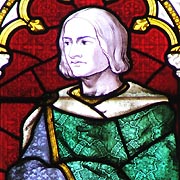


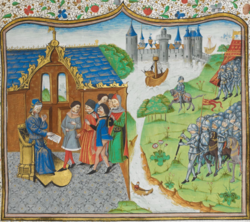
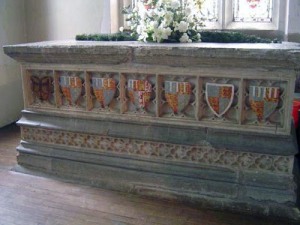
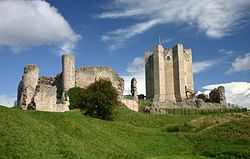
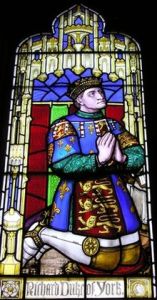
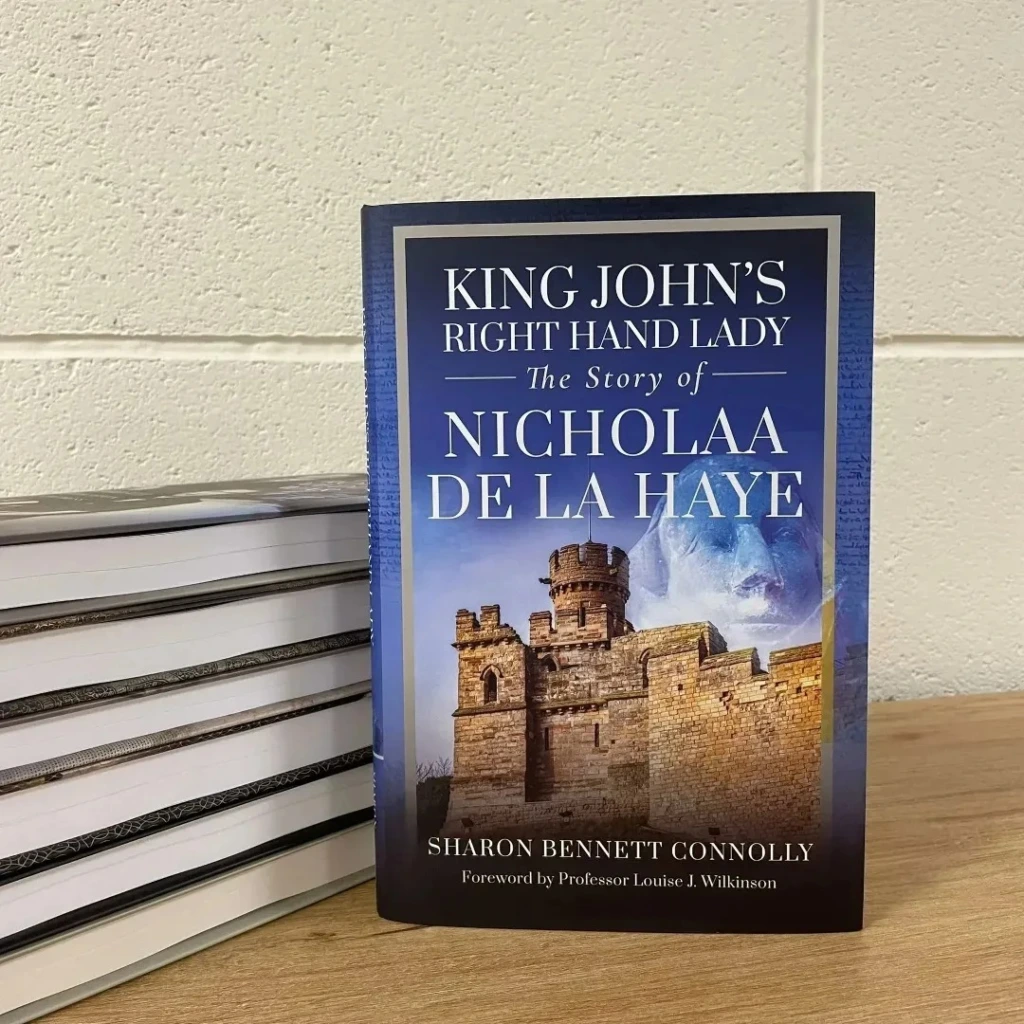




I wish I’d had you as a tour guide when I visited Conisbrough in 2010! Lovely post, Sharon.
LikeLike
Thanks Char – let me know if you ever go back, and I’ll take you round.
LikeLike
I have been to Conisburgh, but as far as Richard is concerned, I would recommend the book ‘Henry V and the Southampton Plot of 1415’ and the article on him in Oxford Dictionary of National Biography.
LikeLike
Thank you Lady – I’ll have to have a look for that book. Could be interesting.
LikeLike
I would recommend it- but be warned, it is out of print, so it is likely to be expensive. I borrowed a copy from my U
LikeLike
Sorry. pressed the wrong button, and published comment too early. I got it from the library and eventually found a reasonable copy to purchase, but there aren’t many to go around. Another book that contains a chapter on him is called ‘Frusrated Falcons’. I can’t remember the name of the author, but its about the children of Edmund of Langley, and is a short, Kindle title.
LikeLike
Mmm, think I’ll try the library first then. Thank you. 🙂
LikeLike
Reblogged this on evelynralph and commented:
I love these fascinating insightsinyoour history.
Evelyn
LikeLike
Thank you Evelyn. 🙂
LikeLike
Oh, I thought this was a new article. Seen the date, it was done for the anniversary. I went to see a play about that in ’15. I wasn’t impressed, far too much missed out (including Cambridge’s marriage to Mortimer’s sister which was not even mentioned), and too much invented IMHO.
I’m a little obsessed with the Southampton Plot though am inclined towards the theory that they were planning to kill Henry. Many say not because they did not confess to it, but having read the Confessions, which virtually admit everything else but, they remind me of how people might today confess to a lesser offense to get a more lenient sentence.
I doubt anyone would confess to killing the King, anyhow, even if they were planning it, as that was an automatic death sentence.
As for Cambridge’s paternity, I think there is more evidence that just the will. His mother does seem to have had something of a reputation, and I consider him and most likely candidate for the gap in the DNA of a certain monarch. Just my two cents.
LikeLike
I think they must have known that the coup wouldn’t be complete without Henry’s death, but it may be they hoped there would be less retribution for their families of they left that but out?
I agree, I do think him the most likely candidate for the break in DNA. Though I am a little cautious, being all too aware of the unreliability of rumours and Cambridge’s brother, the 2nd Duke of York, seems to have had no qualms about making his nephew his sole heir. I guess we’ll never know for certain …. ☺
LikeLike
Yup, and of course legally any child born to a married woman was considered to be her husband’s. (They say that’s why Kings often chose married women as mistresses).
I so need to republish that review I did of the play about the Plot.
LikeLike
You do!
LikeLike
Dear Sharon
How could he have married in 1372 when he was born At the earliest, in 1375?
He is also incidentally, my 16th great grandfather
LikeLike
Edmund and Isabella married in 1372, Sylvia, not Richard. I will try and make it clearer. 😃
LikeLike